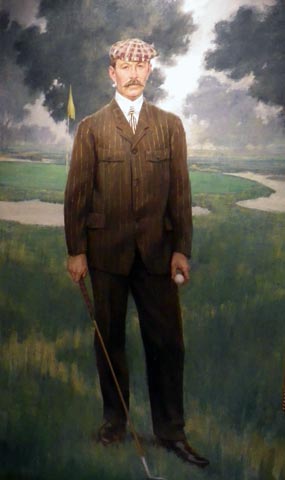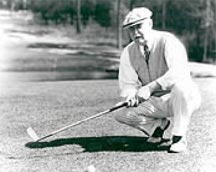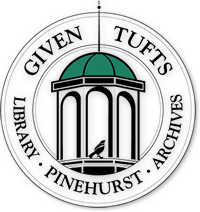About Donald Ross
Transplanted Scotsman Donald Ross transformed the American sports landscape in the first half of this century. At his death in 1948, he left behind a legacy of 413 courses, including such gems as Pinehurst No. 2 in North Carolina, Seminole in Florida, and the site of the 1996 U.S. Open, Oakland Hills outside Detroit. Over 100 U.S. national championships have been played on his designs. Small wonder his name still resonates among the game's aficionados.
Ross was born in 1872 in the north Scottish coastal town of Dornoch. There on crumpled dunesland, he grew up playing one of the world's purest links, Royal Dornoch. As a young man he took up "the keeping of the green." After a year of apprenticeship at St. Andrews under the tutelage of 4-time British Open champion "Old" Tom Morris, he returned to his native Dornoch. In those days, there was no rigid division of labor for golf professionals, so Ross became adept not only at maintaining the grounds but also as a player and club maker.
He was of common stock, making an adequate if unspectacular living. But all that changed when an American professor on golf pilgrimage to the sport's holy land invited him to come to the New World to help spread the game's gospel. Ross arrived in 1899 to build and run the Oakley Golf Club in the Boston area. The next year, he landed an assignment with the Tufts family on a property in North Carolina's sandhills called Pinehurst.
Eventually, he designed and (re)built four courses at the Pinehurst resort, none with more love and care than the No. 2 layout. Drawing upon his extensive background in turfgrass management, he revolutionized southern greenkeeping practices when he oversaw the transition of the putting surfaces at No. 2 from oiled sand to Bermuda grass. The work was done just in time for the 1935 PGA Championship. The result was devilishly quick domed greens and a sense of impending doom for any wayward shots.
During his summers, Ross started designing and building courses throughout New England. Eventually, his practice spread into the Midwest and down the Southeast coast. In association with design assistants J.B. McGovern and Walter Hatch, Ross maintained a summer office in Little Compton, Rhode Island and satellite offices in North Amherst, Massachusetts, and Wynnewood, Pennsylvania.
Of all the courses that bear Ross' name, either as original designs or as renovation projects, he probably never even saw a third of them, and another third he visited only once or twice. Given the constraints of train and car travel in those days, repeat visits were difficult to arrange. Though Ross was a voracious traveler, he did much of his design work from his home in a cottage behind the third green at Pinehurst. There he worked from topographic maps, drew up blueprints, and wrote simple but sharply-worded instructions that his construction crew knew how to implement.
Ross had a genius for sound routings, with very little walking required from one green to the next tee. He would commonly route his short par-4s on uphill ground. Other trademarks included greens that invited run-up shots, but with deep trouble over the green - usually in the form of fallaway slopes - to punish the overly bold golfer. Ross was also not averse to placing cross bunkers in play to punish the topped shot - off the tee, or some 50 yards short of the green. Sadly, a great number of these hazards been taken out of play over the years in the misguided pursuit of "ease of maintenance" or "making the course more playable."

Ross Bibliography:Chris Buie "The Life & Times of Donald Ross"
Paul R. Dunn and B.J. Dunn "Great Donald Ross Courses Everyone Can Play"
Michael J. Fay "Golf As It Was Meant to be Played"
Donald Grant "Donald Ross of Pinehurst and Royal Dornoch"
Bradley S. Klein "Discovering Donald Ross"
Donald J. Ross "Golf Has Never Failed Me"



